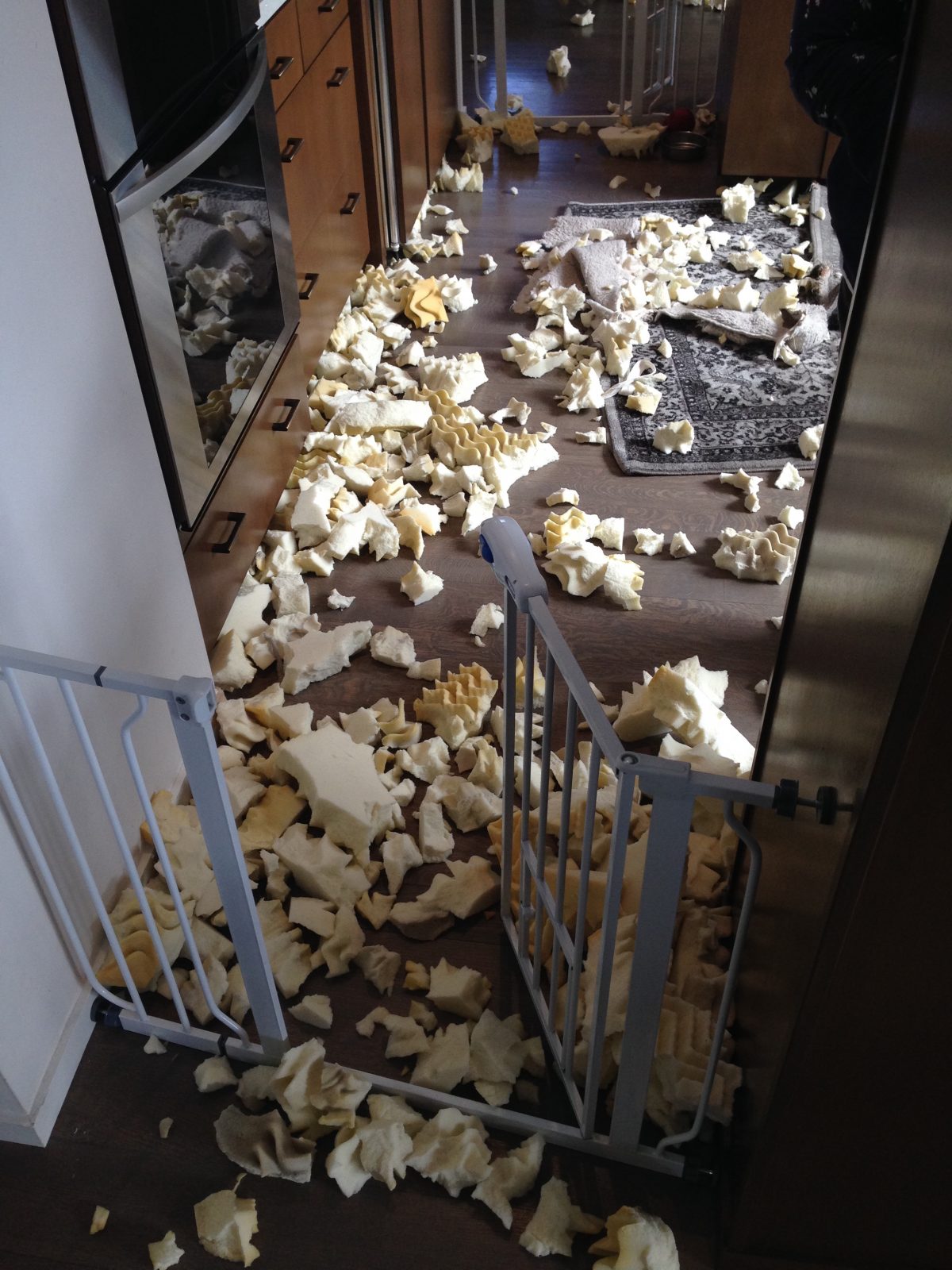As the old saying goes, “that which is reinforced, is repeated.” The beauty of positive reinforcement in dog training is that it naturally bonds the dog to the handler, encourages learning and problem solving, and is fun for everyone involved. Punishment, when fair, fits the crime, is done in a way that doesn’t damage the relationship between the dog and handler, is only done when it is well-established that the dog knows better, and comes equipped with a positive outcome. For instance, when the dog hears “no” (the word “no” is technically punishment) the trainer immediately gives the dog something to do that is quickly rewardable. For instance:
- Spot jumps on the counter
- “Spot, no!”
- Spot gets off the counter
- “Good boy, Spot… Come!”
- Spot comes
- “Yes!”
- Spot is rewarded
Hidden between the weeds of rewards and punishments are neutral (or non-existent) responses – those behaviors which are neither rewarded or punished. For instance, when the dog responsible for the picture in this post chewed his bed, he wasn’t given a reward by the owner, but he wasn’t immediately punished for it either. The problem with these scenarios is that such behaviors might as well have been rewarded. That’s right. The joy of killing the bed was in fact, rewarding, even though it wasn’t praised or treated. In the same way that barking at the mail man (and in the dog’s mind, making him go away) is what we call a self-rewarding behavior, so too are behaviors such as ripping up beds and digging.
Right now you might be asking, but if I’m not there, how am I supposed to direct or stop him? The beauty to the answer of this question is that it is stupidly simple… almost to the point that it seems insulting. That is:
Don’t let it happen to begin with.
Set your dog up for success and you’ll set yourself up for success, too! Until you are 100% sure that your dog can be trusted with a plush bed or soft toys, he shouldn’t be given them when unsupervised. Until you are positive that your dog isn’t going to harass the cats, don’t leave them alone together. Until you are totally confident that your dog won’t eat your seatbelt or a headrest if you leave him in the car for 2 minutes while you pick up dry cleaning, be sure he is crated. Again, behaviors that are reinforced are repeated. Be sure that your lack of a response to an undesirable behavior isn’t encouraging your dog to become everything your training is trying to prevent.

